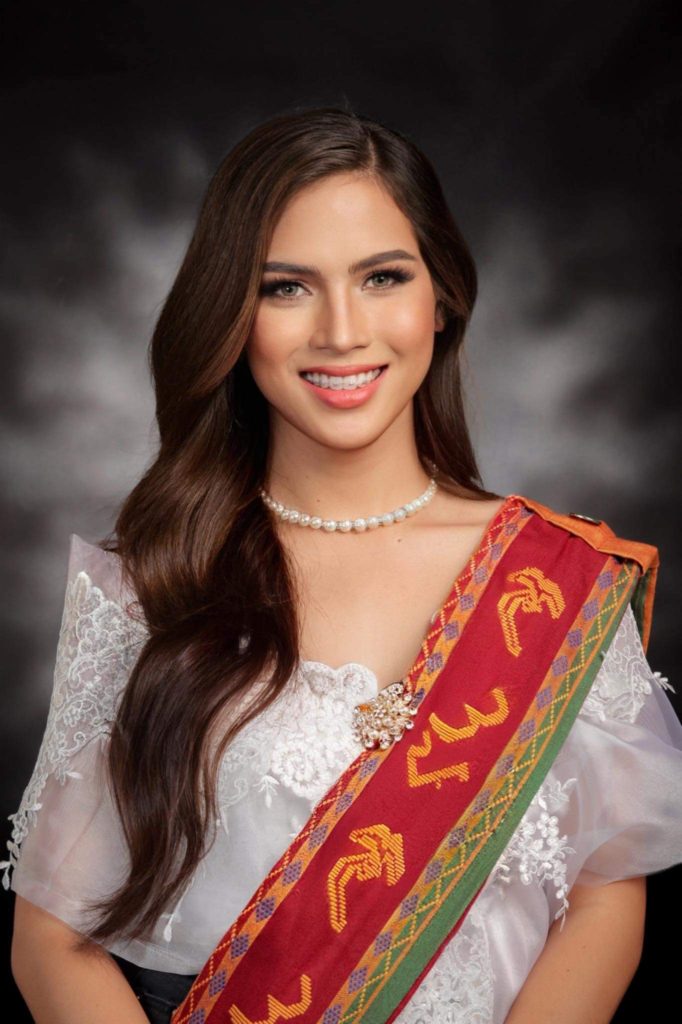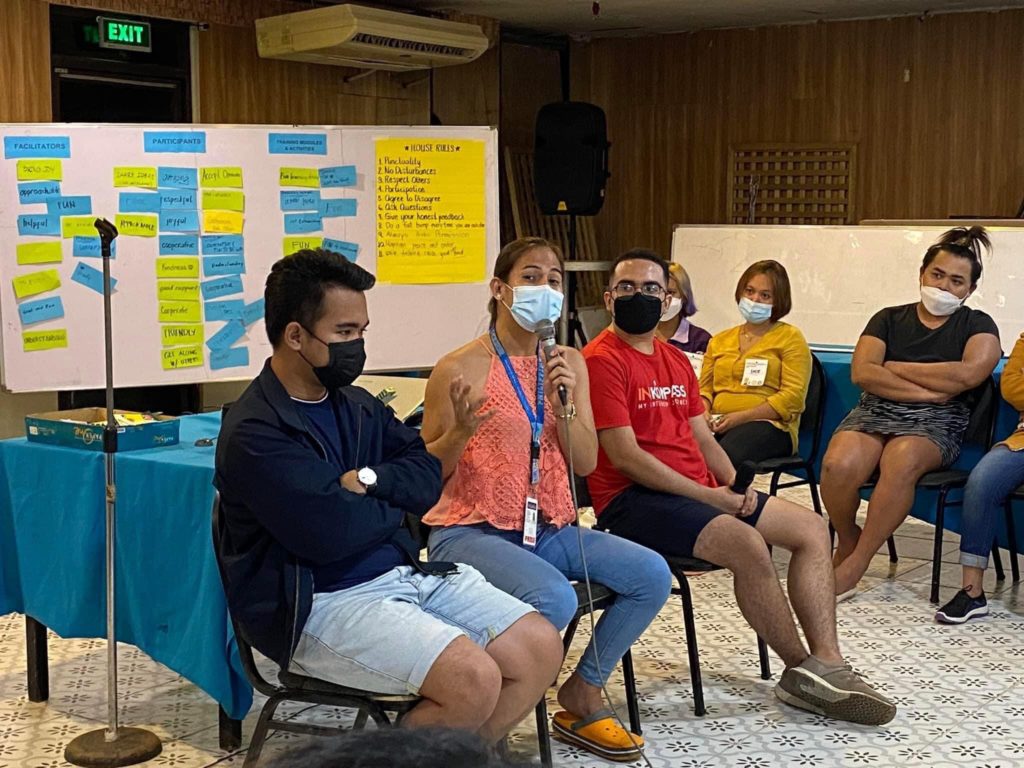There have been notable transgender people for all of recorded history. There’s Lucy Hicks Anderson, born in 1886, who started presenting herself as a girl at a young age, and is considered one of the earliest fighters for marriage equality in the United States. There are the likes of Marsha P. Johnson, Sylvia Rivera, and Lili Elbe who we have known through films that chronicled their lives. In sports, professional US tennis player Renee Richards already broke ground for trans rights in the 70s before she transitioned in 1975. In recent years, Heidi Saadiya from India, made history as the first transgender broadcast journalist from the state.
In the Philippines, transwomen have slowly emerged to ceaselessly pursue their passions. We have Kevin Balot (who won as Miss International Queen 2012 in Pattaya Thailand), Trixie Maristela and Francine Garcia, who both look back with gratitude to Eat Bulaga’s famous segment “Super Sereyna”, their springboards to current international titles and careers as entertainers and models. Cebu Pacific’s Jess Labares and Mikee Vitug are proud first transwomen Flight Attendants in the country. And who could ever forget Geraldine Roman, the first transgender woman in Philippine Congress?
As the LGBTQIA+ community continues to grow, one figure has silently but successfully conquered an industry that transwomen have yet to dominate. Meet Philippine Daily Inquirer’s Kaye Brier, a transwoman journalist—and possibly the first ever in the Philippine news industry. “Possibly”–as Brier’s team is still verifying this distinction, but perhaps the claim may be closer to truth as only Brier comes up on record in this category.
Getting to know Kaye
Brier is a graduating BA Communications student at the University of the Philippines in Cebu. What started out as a mere internship at the Philippine Daily Inquirer (PDI) for the degree requirement ended up as an official stint with the country’s most credible and influential newspaper.
Brier admits to being a student activist, too, and loves immersing with ordinary people in the community, including farmers and fisherfolks, and a staunch advocate of the LGBTQIA+ rights. “As a student activist, I fight by writing relevant stories, and exposing stories of the communities in the margin. In PDI, we believe that no stories should be left under the rock, so I tell these real stories, and let it mold society to become better and progressive in the future,” she said.
Transitioning, for this Negros Oriental lass, began when she was in second year college. “The whole transitioning journey was difficult, expensive, and extremely risky. Remember, transwomen in the Philippines do not have equal access in our health system, for a safer hormonal replacement therapies, and other procedures,” she admitted, and added that everything was worth it, and she is happier now.
Currently, one of Brier’s passion projects, which she hopes to see grow and expand, is to start an organization of community journalists in Negros Oriental because she believes that it is not only passion that will help them reach their audience effectively, but also the right space and opportunities. If there is a burgeoning group of environmental journalists, she also wants a united organization of community journalists that will push stories about the marginalized people in the country, and of the LGBTQIA+ members.
Trailblazing the road less traveled
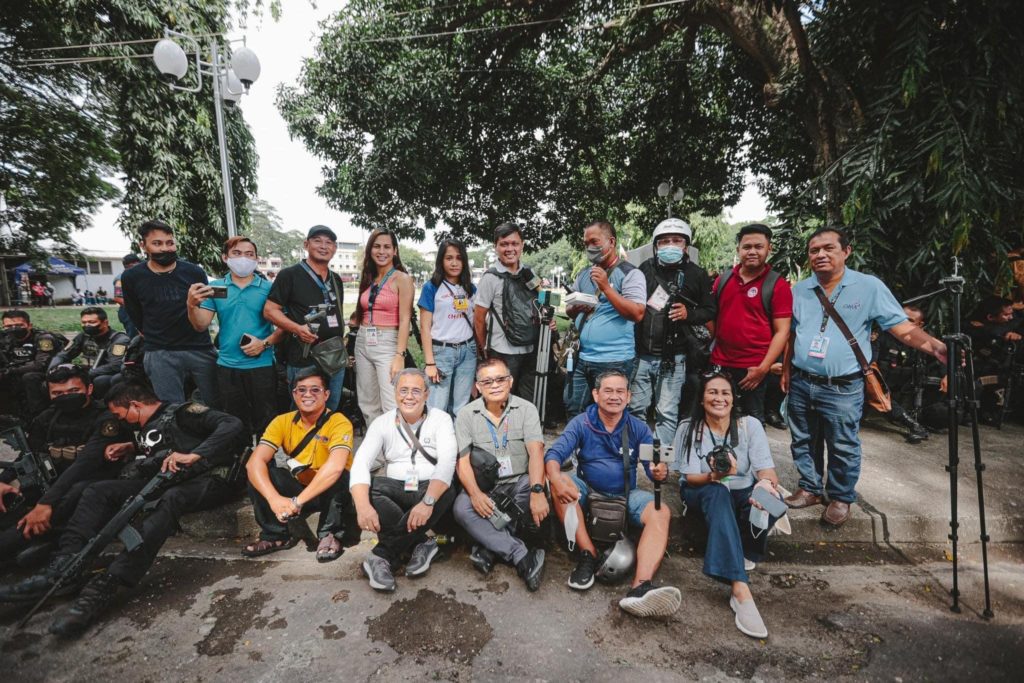
Brier does not want to claim that she’s a good writer, although she has joined campus press conferences in high school and volunteered in alternative media in college. In fact, she grew up with the notion that journalism is a very demanding career, where people get paid less thus, she never imagined she would end up where she is. However, she considers her current stint at PDI as preordained. “My family are doctors, lawyers, others work in a corporate industry, so I didn’t imagine I’d become a journalist, but here I am!” she mused, noting that she couldn’t be prouder to be what and where she is now—PDI’s official news correspondent for the Visayas.
What’s important for her is the passion and love for work, and the openness for learning and unlearning. The true meaning of success has also somehow transitioned for Brier, who believes that it is how you pour your best in your passion or profession. “I realized that being a journalist is not only a profession or a mere means of livelihood, but an extension of how I express my love for the community and fellowmen. My own experiences in some organizations have helped open my mind and eyes. I saw the struggles that are really happening. I think my passion to write started there,” she recalled.
Even as simple as telling stories from on ground, Brier knows she has the power to move society. She looked back at the coverage she did during the aftermath of Typhoon Odette, and she recalled that when people recognize a journalist, they see hope. These survivors know that the moment journalists retell their tragic stories, donations will start to come in and local government units will move to help. “We let the community know that we don’t simply live for ourselves alone, we also get to touch their lives to become empathetic to the stories of others, and that’s why help comes in, the call for justice begins,” Brier acknowledged the great power and responsibility put upon her shoulders.
Brier prefers telling simple but interesting stories of real people—of teachers struggling with the resumption of the face-to-face classes because they get to spend their own money, the success story of a taho vendor, fisherfolks who do campaigns from their own money, teachers who turned a stockroom into a classroom. It may be insignificant stories to some, but these are stories of hope and light for her. “People would dismiss it as a petty story, but that’s what I love! These are the kind of things that I want to write about, stories about people in far-flung areas that no one has ever known or heard of,” she exclaimed.
To say that journalism is not an easy job would be an understatement. There is no story worth a life. But deep inside, Brier loves the sense of fulfillment from knowing that she has helped people by sharing their stories. “As journalists, we do not just record and tell what we see or hear, hindi lang ito chismis (this is not mere gossiping),” she said. As a responsible journalist, she also analyzes how these stories happening today will affect the future, and how this is relevant to what happened in the past. “We connect all these things, and we link it to other relevant issues happening in the society. Then we become relevant to the community because we enjoy the kind of privilege and power about how we link and raise these issues. I believe that a particular issue is not a stand-alone issue but is interconnected with other issues happening in the society. So, if you have the empathy and the urge to tell these truthful stories to the community, that would be a big help as we step forward towards real unity and progress,” Brier explained.
Struggling with the stigma
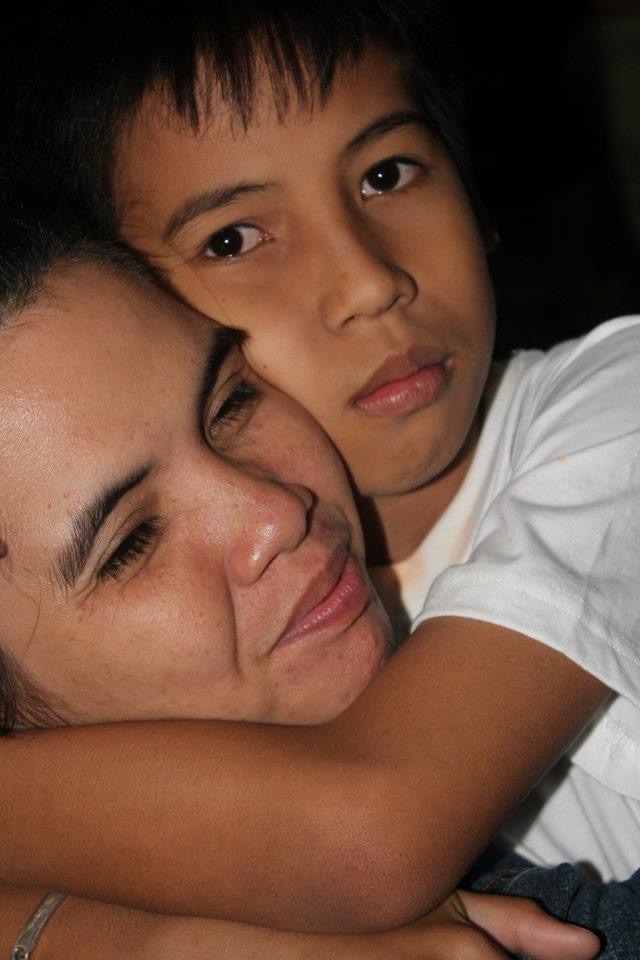
In a cisgender-dominated news industry, it is remarkable how a how a transwoman like Brier has perfectly fit in. But being in this cut-throat profession, the struggle is evident every single day, as people she meets are usually amazed at her, but are also rather skeptical. When she interviews her sources, for instance, they would usually question and doubt her capacity to do the job well: Bakit ka nandito? Kaya mo ba talaga? Kaya mo bang pumunta sa mga delikadong lugar, mga riots, commotions? Dapat sa corporate or fashion ka. (Why are you here? Are you sure you can do this? (Are you really capable of going to dangerous locations, and cover riots and commotions? You should have worked in a corporate office or in the fashion industry.) Apparently, transwomen are still typically relegated to roles such as beauty queens, salon owners or staff, fashion models, or comediennes but Brier is here to step up the game and break the barriers.
In her personal Facebook post, Brier shares: “There was this time I was questioned for staying in this job, because others perceived someone like me as soft and frangible, they said I must have just been in a corporate office or in an exploitative bar uttering jokes and giving entertainment to earn. In the eyes of others, I am an oddity. But we must ask ourselves: who would tell us what we are capable of doing? It’s us, not others.”
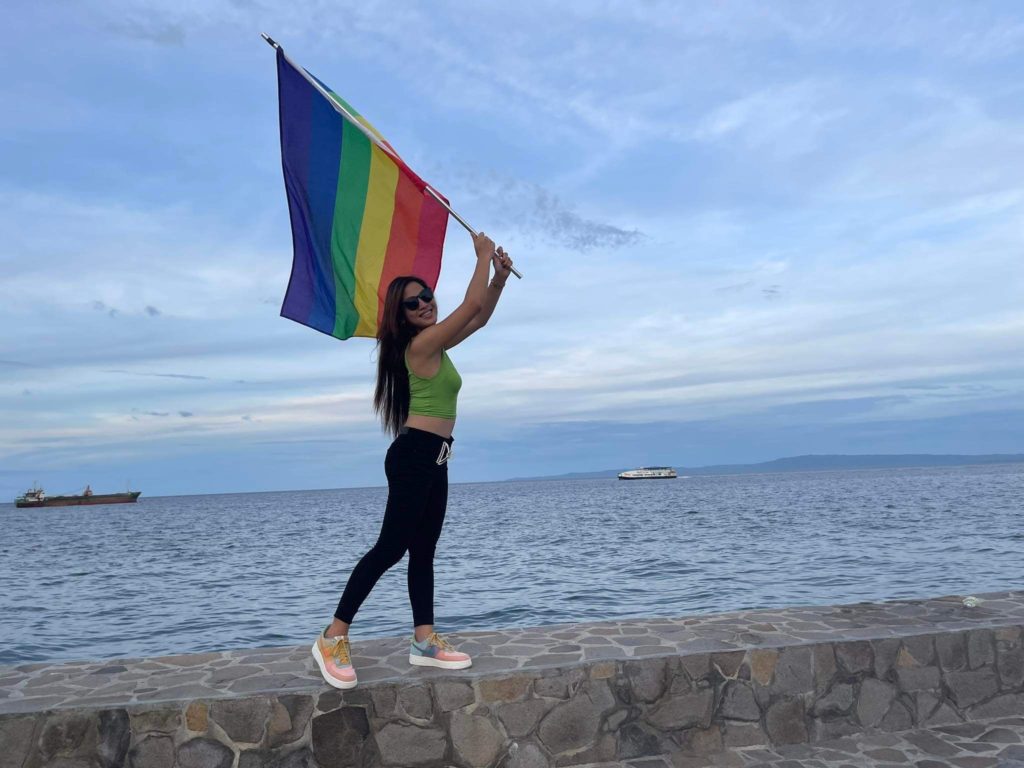
“Many times, my identity becomes the basis on how other people perceive me or my capacity as an individual, as a human being. But members of the LGBTQIA+ community could also excel in any field or discipline that they want to pursue,” she shook her head. Over the years, the LGBTQIA+ community have relentlessly reminded hypercritical individuals that their capability should not be the gauged based on their gender identity and expression, because many of them have been successful doctors, teachers, law makers, leaders, and they could also excel in journalism and tell truthful stories if they wish too, like Brier.
Even when others have raised eyebrows, Brier continues to stand her ground, and she has no plans to raise the white flag. It takes a process, she said, especially in her province in Negros Oriental where the socio-political climate is so conservative. And because stories assigned to her are not limited on LGBTQIA+ issues (as she covers all relevant stories and retells it in a complete, fair, and balanced manner), sometimes she finds it hard to write stories about the LGBT community. Because she does not merely listen and tell stories. She also empathizes. And she acknowledges how difficult it is to write about the same trauma or struggle that she has also experienced.
The kind of stigma that the LGBTQIA+ community experiences does not only exist because of the cis-gender person as even the LGBTQIA+ sometimes discriminate their co-members in the community. This boils down on what the society has taught us. “I have transwomen sisters who do not understand that their gender or preference should not be the basis of what people perceive that they can or cannot achieve. Sometimes we self-discriminate, saying I don’t belong here because I’m a transwoman/bisexual/lesbian. We should lift ourselves and each other up,” she clarified.
For Brier, this stigma stems from the lack of education and understanding about what an LGBTQIA+ or a human being is really all about. “I think people are not just used to seeing me as a transwoman running about to cover a riot, or to interview politicians because they feel I couldn’t do it. But no matter how difficult these experiences and perceptions are, it does not stop me from pursuing relevant stories. I always go back to my core and purpose, about why I write these stories in the first place. That core and purpose is not to just tell these stories, but also to shed light and give hope to people who are left unheard. I want to be with them, standing along with their struggles, because just like the communities that I want to focus on, I acknowledge that as a transwoman, my own community is also struggling for an equal space. My own community also needs the kind of journalism that I offer,” Brier countered.
There is an urgent need to dismantle this kind of culture that perceives that the capacity of every individual to achieve and conquer is based merely on their gender and preference. Cognizant of the struggle to process these stories knowing that, in a way, she is somehow a subject and part of the story, she simply goes back to her core and purpose: that she is doing this because she wants the truth to be the backbone of change and unity which all of us are really seeking right now.
Inclusivity and proper representation
Brier is blessed to have PDI’s desk editors and Bureau Chief who are so inclusive, the same reason why she is thriving in the path she has currently chosen to take. However, she still believes that there is much room for improvement in all aspects, and the journalism industry needs more representation. “Through journalism, we should start educating people; we should start normalizing the culture of inclusivity that does not merely allow us to exist. We want to be where we feel we are not just tolerated, but really accepted by the society,” she said.
Journalism’s role is to bring all stories to every individual and educate them that not because there is already a Kaye Brier in the news industry, the LGBTQIA+ community is already embraced by the society. “Just because there are lesbian doctors or bisexual lawmakers, or any LGBT in different disciplines, it doesn’t necessarily follow that our society is already inclusive. The privilege of others or my privilege as a journalist is not the gauge to conclude that every Filipino has already equal rights and experiences,” she underscored. To measure inclusivity or to determine the signals to stop fighting for inclusivity is when all Filipinos—especially the LGBTQIA+ community—does not suffer the same sad story again. Inclusivity is not only confined to gender equality in the workplace but also equal opportunities in all aspects of life. We can only say that we are really an inclusive country if Filipinos have equal access to education, basic health care, and the social services that we deserve.
A safe space in the society
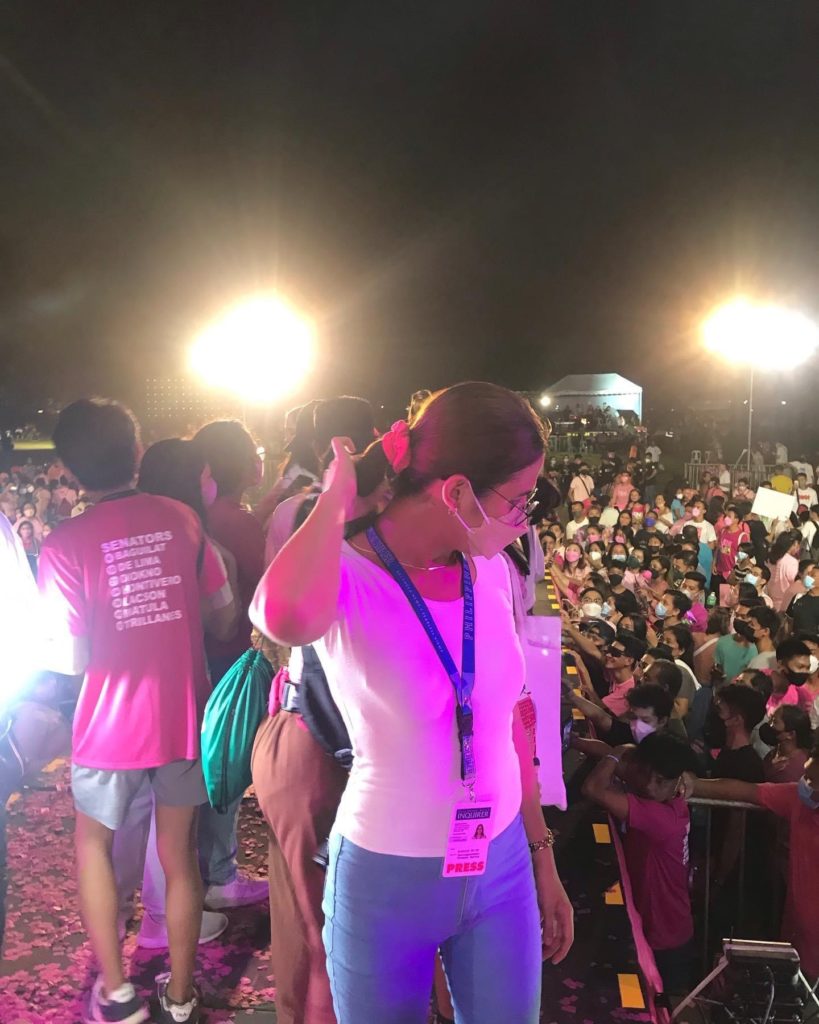
We live in difficult times. There are uncertainties brought about by the global health crisis and economic recessions, compounded by layering disinformation and rampant spread of fake news. Marginalized families are pushed further into proverty, the youth are fraught with repressive policies in education, and the LGBTQIA+ community faces a daily fight for their safe space in the society. Brier believes that journalism will play a major role not only for her as a transwoman and journalist but also to all others feeling and fearing the impact of these scary times.
“I do not only watch and follow these stories, but I also tell them, and by retelling I give hope to people, especially those living in the margins. They too are part of the society, and they can be major players. For a very long time, only those who are privileged had the power to influence. Journalism changed all that. It has put the underprivileged Filipinos in the spotlight, not to capitalize on their poverty, but to inspire others with their stories and struggles for a just and equal society. We amplify and magnify their stories, making them realize that they too are part and major players of the society,” Brier revealed.
HERstory-in-the-making
There is no doubt that even female journalists in the news industry have been facing tremendous difficulties over the last several decades, especially in a world that tends to take women lightly, and in an industry that is still highly male-dominated. So, imagine the struggle for a transwoman like Brier who has recently took a step in conquering this industry. The painful fight for a safe space is long and arduous. But Brier remains unfazed.
“To new and aspiring journalists, the society [is] sick of disinformation, affecting not just your families but all families especially those who live in the margins. We should always remember that our society is facing a threat that is engineered to brainwash our people to believe what is not true. Those who are in power could whitewash the past that is influencing our present and future. I hope that journalism could be part of the movement that will seek to dismantle this kind of machinery,” she declared.
Brier believes that her kind of journalism, along with the principles that are right and true, could save our society so we could be and do better next time, and so our struggles today will no longer be suffered by the next generation. In each story she writes, she wants to connect an individual to the reader, and give them a solid and lasting connection, so that they will learn what things other people learn not only about what’s happening in the society, but also about empathy, patience, and the right to ask for accountability. “As a journalist, I have the power and authority to set an agenda. This agenda is necessary so that we could have a community that is more united, not by illusion or propaganda made by people in power, but by the truth. It’s a constant struggle, but I will carry on and continue to break the barrier,” Brier concluded.
Her past personal encounters have helped her imagine a way forward to a better and more promising trans-future. The seemingly small and insignificant stories she writes bear massive learnings. It frequently awakens a sense of obligation to move, to help, to influence, and better the lives of all Filipinos. That’s what real and old-school journalism is all about. It is a battle between the powers-that-be and one’s passion to tell the truth. Embarking on this journey, Brier firmly believes and continues to stand her ground with trust and faith in the reality that there is a chance for the country’s own transition, from fake news and lies to truth, fair, and balanced retelling…one written word at a time.
Intrigued by this TransPinay and her media journey? Follow her on Twitter.
Some excerpts were from Kaye Brier’s interview with POP! representative Benjo Diaz. /VT
Other POP! stories you might like:
The ‘A’ in LGBTQIA+: Understanding asexuality and aromanticism from the aroaces
Putting the ‘B’ in LGBTQIA+: What it means to be bisexual in the Philippines
J.K. Rowling’s new book, which features a protagonist mistreated over transphobia, seems sus
10 local organizations that foster safe space for the LGBTQIA+ community


